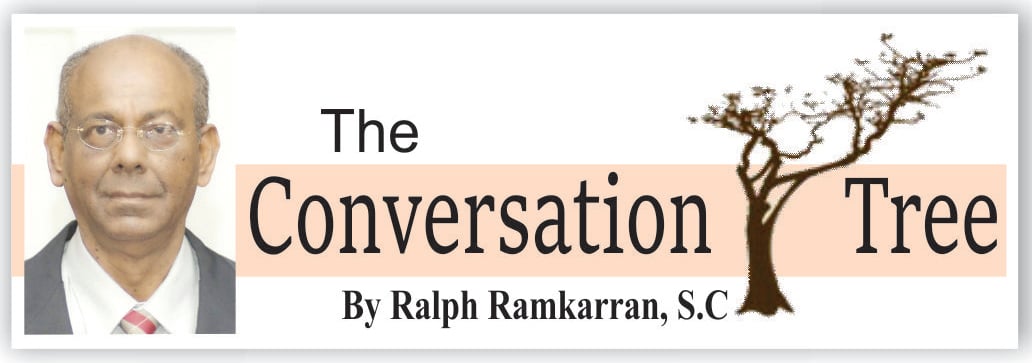When nationalisations of private-owned enterprises took place in the 1970s, first bauxite, then sugar, followed by the banks and others, initiated by the PNC government and supported by the Opposition PPP, they were ideologically and politically driven. The ideological considerations were genuine, but there were also other important considerations, such as imposing political and managerial influence over the direction of the economy as well as the country. It is not insignificant that while this level of control was being imposed, the Declaration of Sophia by the PNC announced and adumbrated the paramountcy of the party over the state in 1974.
The management structures which were imposed on the nationalized companies followed the pattern of state capitalist enterprises in the West, particularly in the UK, with some hints of recognition of trade unions and workers, who were nominally recognized by receiving token representation on boards of directors. The management of the ballooning state-owned sector by state, party and business bureaucrats, which eventually grew to incorporate about 80% of the Guyana economy, was incorporated in the Public Corporations Act which was passed in 1988. The PPP was highly critical of what it called the “top heavy” management, the “Cadillac” lifestyle of managers, the lack of workers control, or even significant representation, in management and the development of corruption and bureaucratisation. The system of management was incorporated in the Public Corporations Act which was passed in the National Assembly in 1988.
Since then, 40 plus years on, significant changes have occurred in Guyana and the world. Following the Reagan/Thatcher influences on economic policy, imposed by the world’s financial institutions, and the collapse of the Soviet Union, market policies attained mythic economic proportions. These developments had important influences in Guyana. The difficulties experienced by Guyana’s economy in the 1970s and 1980s from higher oil prices, reduced commodity prices and corruption and mismanagement eventually resulted in economic decline and eventual collapse, resulted in Guyana being forced, after the passing of Burnham and the accession of Hoyte in 1985, to dismantle the economic policies of the Burnham era and adopt the IMF’s solutions of privatisations, market solutions, reduced spending and pay freeze.
The declining bauxite industry could not be sold and the IMF was persuaded to allow the sugar industry and Guyoil to remain state owned. But the nature of state management institutionalized by the Public Corporations Act remained intact. And the problems of management of the 1970-1980 era under different governments are unchanged. It is difficult to understand how modernized, young, intellectually precocious intellectuals, in control of the PPP governments of 2001 to 2015 and the APNU+AFC government of 2015 to 2020, can allow archaic management principles and structures to continue to dominate a country and a state sector that are otherwise promoting modern solutions everywhere. I recall two state-owned enterprises refusing to accept offers to settle debts on periodic payments on the ground that the payments are too small, or the debtor could afford more. In both cases the enterprises received nothing. The same principles in the few remaining state-owned enterprises and in other state-managed operations remain the same to this day and little effort is being made to restructure their operations.
No one can now be convinced that any alleviation of the management problems, including corruption, will be achieved unless there are substantial innovations in the methodologies of ownership and management. I cannot pretend that I have the answers, but it has been proposed that selective strategies of privatization and management restructuring can substantially improve the profitability and functioning of enterprises. Management can remain exclusively in the hands of the 49% owners except where critical decisions are concerned. Guyoil is used to regulate oil prices to prevent oil companies from not passing on reductions in oil prices to consumers. The 51% owners will want to have a dominant say in the price that Guyoil sells gasoline at the pumps. These issues are simple to resolve by management agreements which allow the 49% owners to have majority board control, except for matters of vital interest to the 51% owners. This is not rocket science and is resolved all the time by negotiation.
There are also weird economic decisions which are taken by governments. While there were criticisms for the private-public partnerships which gave us the Berbice Bridge and the Marriot, which everyone now sees were valuable investments, why would a government set up an asphalt plant? And why would it surprise anyone at the level of corruption that it attracted? If an asphalt plant was necessary for Guyana, the necessary incentives for a private investor could have been offered, or an appropriate private-public partnership with private management could have been promoted. The asphalt plant should be immediately sold and the necessary incentives provided for its successful operation. If this does not occur, the corruption will continue in any management that the government establishes to manage the business.
This column is reproduced, with permission, from Ralph Ramkarran’s blog, www.conversationtree.gy






